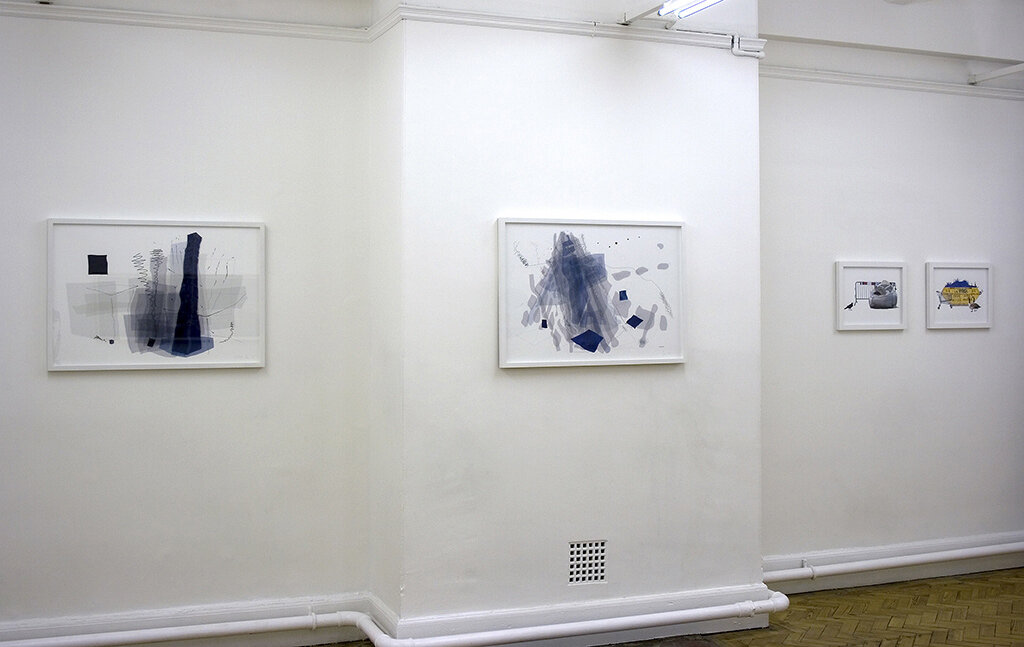Vane Shorts 3
EC Davies, Jorn Ebner, Michael Mulvihill, Matthew Smith, Alison Unsworth
7 December 2007
Alison Unsworth, Retail park, 2007, archival inkjet print on paper, 33x44cm
‘Vane Shorts 3’ presents the work of five artists, each of whom shares an interest in landscape and the natural world, mapping and site, their approaches to which vary from the literal, to the psychological, scientific, and the satirical.
EC Davies’s work, undertaken during her time as artist-in-residence at Northumbria University’s Advanced Materials Research Institute, offers us a way of contemplating the micro-world. In her still images and animations, she engages with the technologies used in the laboratory, and uses this information as the basis for her work. The scanning atomic force microscope (AFM) produces information by tracking electrons that are emitted towards the objects that it seeks to describe, producing precisely detailed images, showing specimens at many thousands of times their actual size. In her Wonderland 2 (AFM Microscopy) (2006) animation, she has used – and manipulated – colour, time and sound to reflect on the abstract nature of the raw data presented by the AFM, in this instance, from scanning the surface of a piece of glass.
Jorn Ebner creates imaginary realms which seem to hover somewhere between a vision of utopia and dystopia. Here, in the digital prints, Cityscape I and Sub-electrica (2007), his actions of marking and mapping are an individual response to place: small gestures of trespass or disruption, exploring and testing out a logic of formalism in the most unlikely of spaces.
Michael Mulvihill’s latest drawings were produced while on a residency at the Contemporary Artist Centre, North Adams, Massachusetts, USA. The Witch Vortex series (2007) of drawings take their name from that of a shaman who lives in the mountains that surround North Adams, and for Mulvihill the name evoked a sense of primeval disquiet. Using the town of North Adams as his subject, the drawings suggest a supernatural menace, and a ‘sublime disturbance’, that references traditions of the American Gothic horror and ghost story. Mulvihill’s previous work has also explored a sense of fear through landscape that dissolves into circular marks, or written texts, drawing upon a childhood experience of the later years of Cold War paranoia. Mulvihill was born in Jarrow, UK, in 1973 and currently lives in Gateshead. In summer 2007 he was artist-in-residence at Incubate, Chicago, and The Contemporary Artist Centre, North Adams, Massachusetts, USA. His solo exhibition, ‘Transparent Radiation’, was at Art Gene, Barrow-in-Furness, and the Hanging Wall, Waygood Gallery and Studios, Newcastle upon Tyne (2006-07), during which he also participated in the Waygood Gallery and Studios ‘Harker Herald’ billboard project.
Matthew Smith works across media in sculpture, drawing and video, but his projects share a concern with fictionalised and idealised representations of nature and of place. He takes as subject matter the utopian pastoral scenes of food packaging, for example, or the disjunctions between billboard advertising imagery and the place of their siting. British Wildlife (Birds Part 2) (2005) is one of a pair of drawings depicting the different species of native British birds. Taken from a guide and depicted in silhouette, this rendering bestows uniformity on each bird, where there is no distinction between the ‘common’ and ‘endangered’.
Alison Unsworth’s recent work involves an examination of the built environment. Informed by her many projects in the public realm, her gallery-based work depicts urban landscapes that appear simultaneously familiar and unknown. The Small island series (2007) of sculptures depict areas of public space (tarmac ‘islands’) in the aftermath of a ‘flood’. The flood has been caused by an overflow of yellow traffic paint; a material and colour which in increasingly used to mark boundaries, edges and hazards in the public realm. The digital prints, Chrome collection and Retail park (2007), show containers of generic street furniture, as if delivered ready for installation. However, the scale is all wrong, and the tiny lampposts, benches, and the like, are but a fraction of the size of the resident birdlife.
Take a video tour of the exhibition
Share this page















